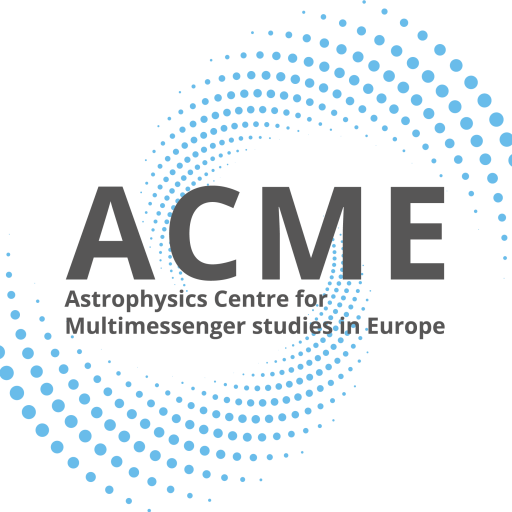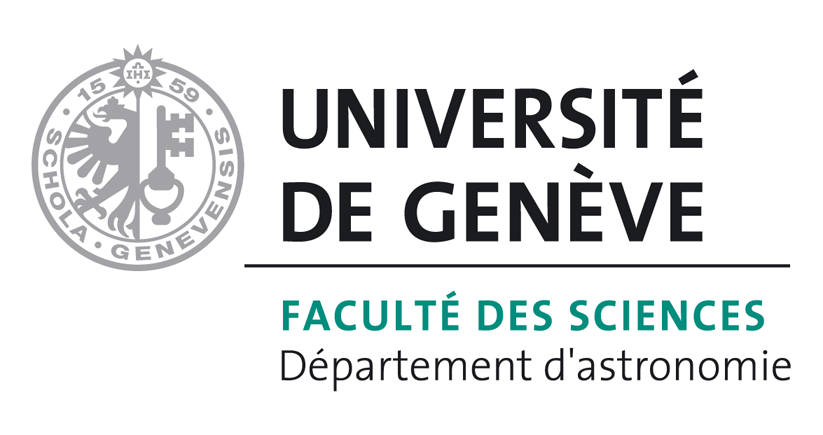The Department of astronomy of the University of Geneva hosts several projects that are of interest to provide scientific expertise for astrophysical multi-messenger observations. There are four main research directions: Exoplanetary Systems, Stars Formation & Evolution, Galaxies and Universe, Extreme Universe. In the context of ACME, we focus on providing expertise to access high-energy instruments and in studying the population of objects leading to of gravitational-wave signals. The Gravitational-Wave Science Center (GWSC) is a newly founded, interdepartmental research centre aiming to consolidate the activities related to gravitational-wave science taking place at the departments of Astronomy, Theoretical Physics and Particle Physics of the University of Geneva and stimulate interdisciplinary work in the domain of Gravitational Waves, both on the theoretical and experimental fronts.
Webpage: https://www.unige.ch/sciences/astro/en/
Main contact for TNA call: Carlo Ferrigno
Available expertise
Within the Department of astronomy of the University of Geneva, there are the following expertises
committed to provide TNA support:
- The INTEGRAL Science Data Centre (ISDC) provides data for the INTernational Gamma-Ray Astrophysics Laboratory and the software to exploit them.
- The Common Data Centre Infrastructure that started to develop the MMODA interface
- The leading group of the Gaia CU 7 on variability is responsible for the characterization of variability of Gaia sources
- The Euclid photo-Z group develops algorithms to combine photometric data and derive an accurate estimate of the distance of galaxies.
- A group working on high-resolution X-ray spectroscopic data from XRISM, XMM-Newton, and Chandra.
- The author and developers of the REFLEX model for the active Galactic Nuclei emission.
- A group that develops evolutionary models of gravitational-wave source progenitors and leads the development of the state-of-the-art population synthesis code POSYDON.
- The author and developer of the JETSET model for electromagnetic emission of astrophysical jets.
Available tools
MMODA: multimessenger online data analysis. It is a platform to analyze data from various missions and combine them together in contributed workflows that are written as jupyter notebooks and rendered as an online service. Dedicated processing engines are provided for INTEGRAL, Polar, Antares, and a selection of public products from Gaia, HeSS, Magic, DESI legacy survey. It is developed and maintained in collaboration with APC and EPFL.
POSYDON: A General-Purpose Population Synthesis Code with Detailed Binary-Evolution Simulations. It incorporates full stellar-structure and binary-evolution modeling, using the MESA code, throughout the whole evolution of the binaries. The use of POSYDON enables the self-consistent treatment of physical processes in stellar and binary evolution, including: realistic mass-transfer calculations and assessment of stability, internal angular-momentum transport and tides, stellar core sizes, mass-transfer rates and orbital periods.
REFLEX is a ray-tracing code that propagates X-rays through the surrounding medium, taking into account the most common physical phenomena, like photo-electric absorption, Compton and Rayleigh scatterings and fluorescence. We provide the RefleX code itself for both Linux (x86-64) and Mac OSX (both x86-64 and ARM), its documentation, the RXTorus model of a torus with varying covering factor, as well as example RefleX parameter files and some hopefully useful scripts.
https://www.astro.unige.ch/reflex/
JETSET is an open source C/Python framework to reproduce radiative and accelerative processes acting in relativistic jets, and galactic objects (beamed and unbeamed), allowing to fit the numerical models to observed data.
https://jetset.readthedocs.io/en/1.3.0/
Involved scientists



